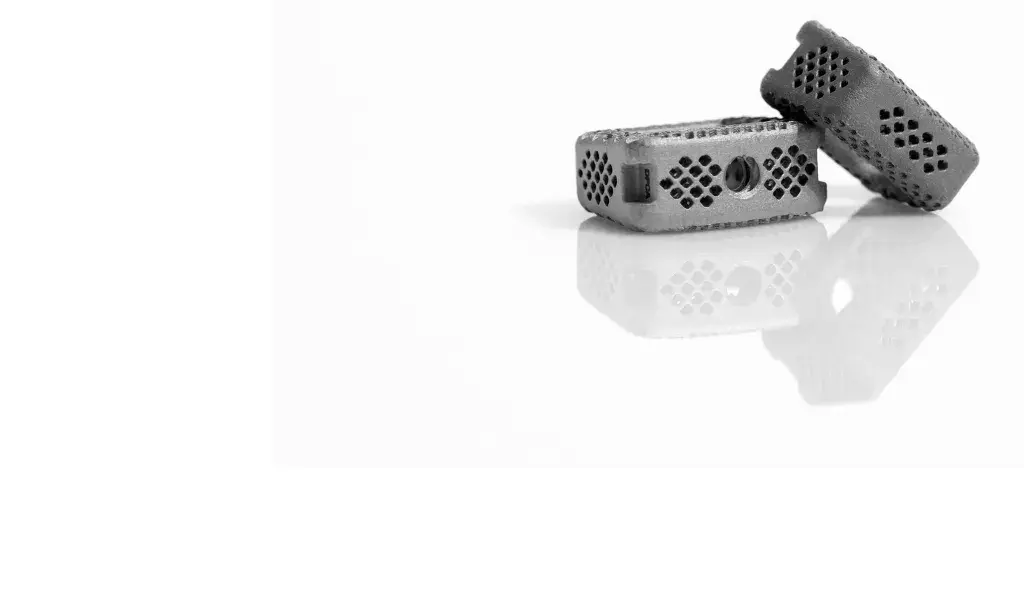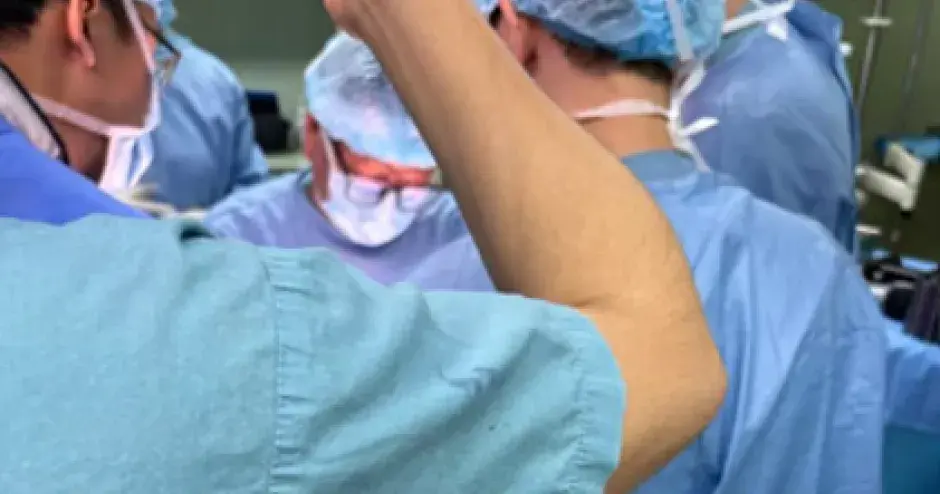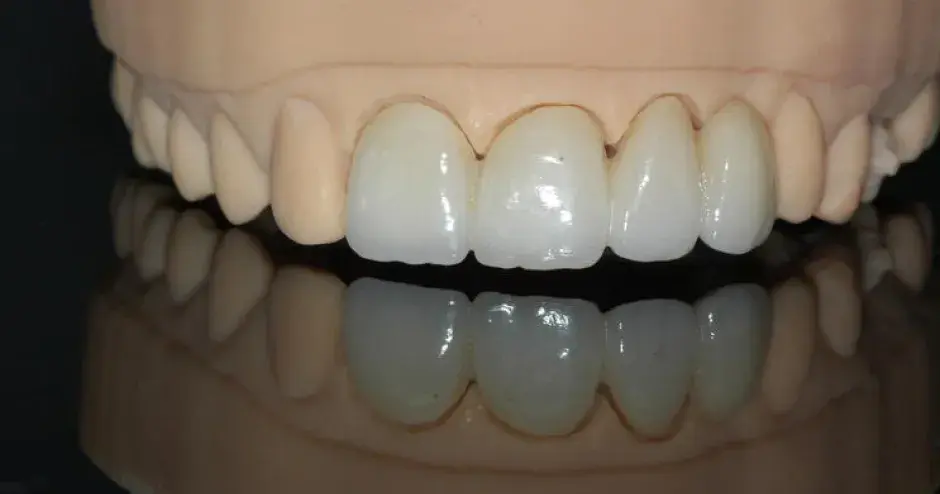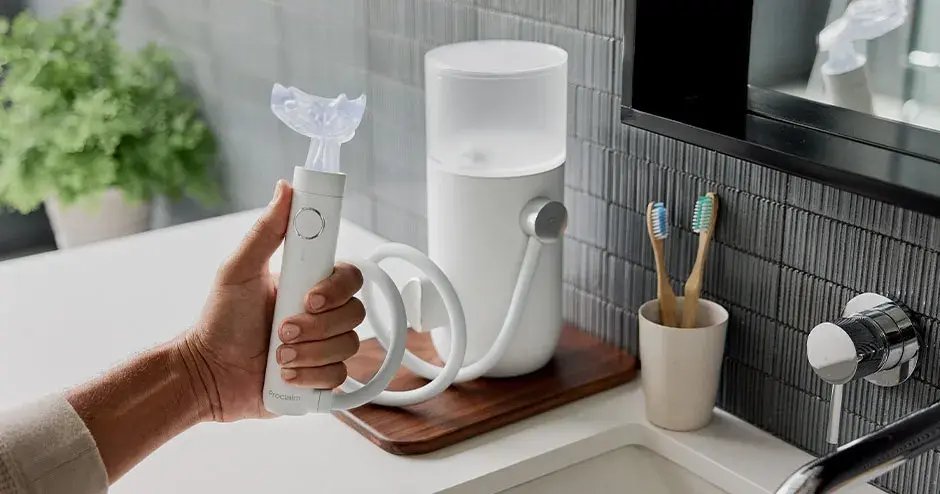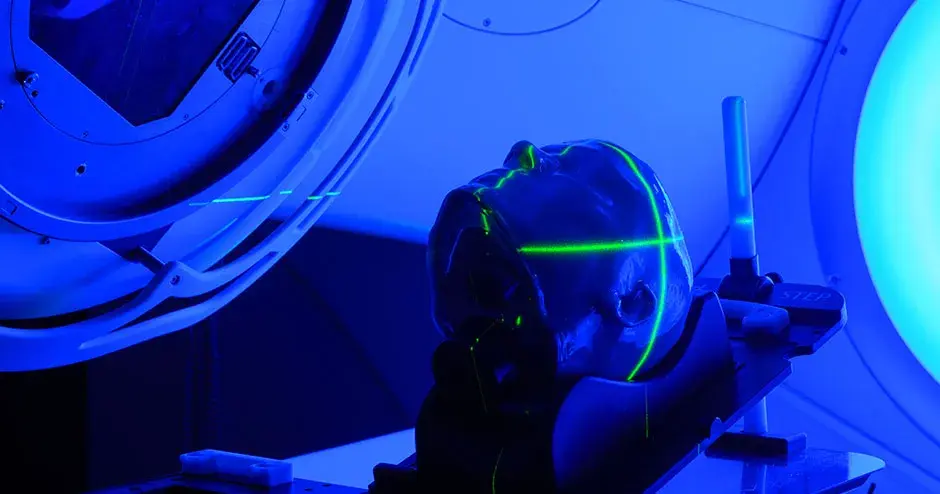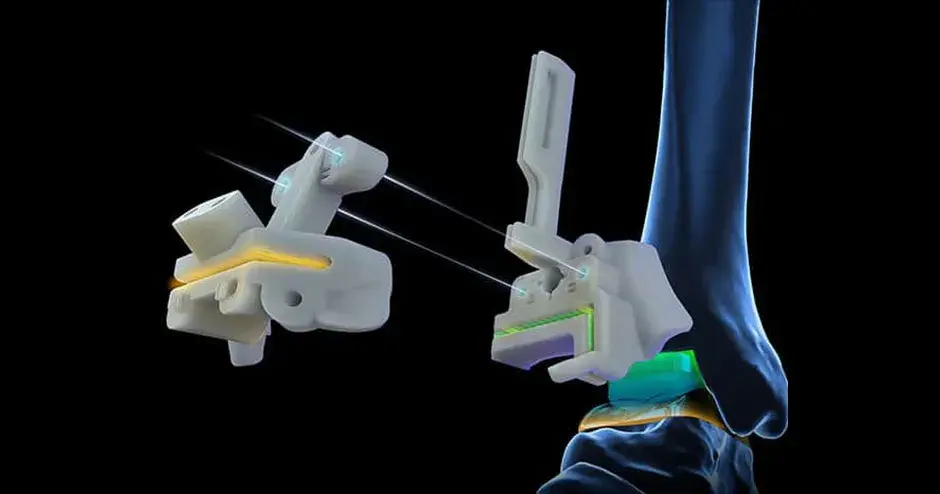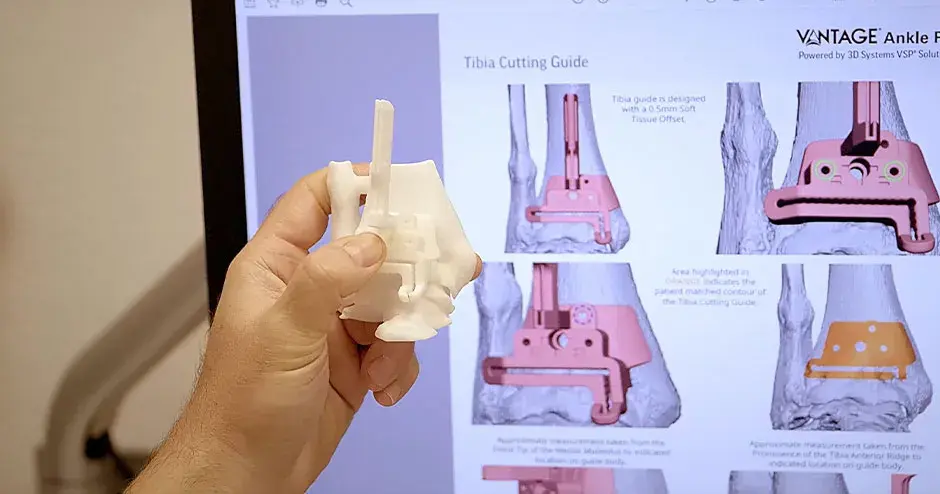Effective partnerships are formed when each party brings something unique to the table, making the sum of the two greater than the individual parts. The partnership between K2M and 3D Systems fits that description perfectly, and builds on the shared values between the two companies to enhance innovation in processes and outcomes.
K2M is a global leader of complex spine and minimally invasive solutions focused on achieving three-dimensional Total Body Balance™. Surgeons worldwide use the company’s products to treat some of the most complicated spinal pathologies.
As K2M looked to broaden the spinal solutions it offers, it sought to match its own expertise in spinal treatments with precision production expertise for medical device manufacturing. 3D Systems was an early frontrunner for this endeavor. In addition to over 30 years as an industry leader, 3D Systems frequently supplies surgeons, healthcare professionals, medical device manufacturers, and medical teaching staff with precision healthcare solutions, including surgical simulators with VR capability, 3D printed anatomical models, VSP® (Virtual Surgical Planning), and patient-specific 3D printed surgical guides, instrumentation and implants.
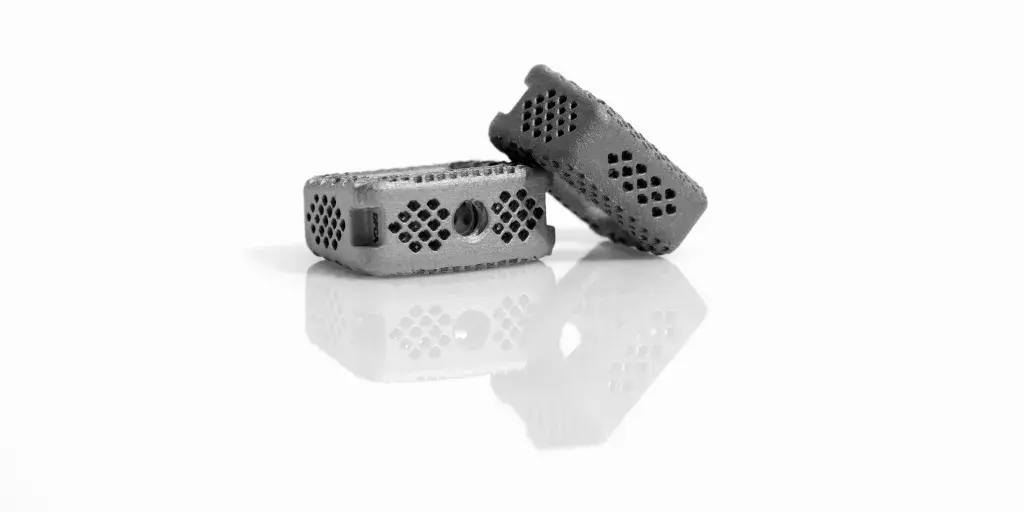
Collaboration for the greater good
The K2M/3D Systems partnership thrives on the different technological strengths each party brings to the relationship as well as the companies’ compatible cultural values, according to Jim Ham, director of marketing for K2M’s Complex Spine Group.
"We understand the spine and 3D Systems understands 3D printing, but there are a lot of synergies in the way we run our businesses, our dedication to innovation, our overall goals as organizations, and our mutual desire to make patients’ lives better."
K2M started out as a company that provided new technologies and devices for treating spinal deformities. Adding 3D printing to its production technologies has allowed the company to expand beyond deformity treatment into the rapidly growing market for devices that treat spinal degeneration through more minimally invasive procedures.
"We needed 3D printing capabilities to continue to develop our degenerative and minimally invasive portfolios, and 3D Systems gave us those capabilities," says Ham. "Our partnership with 3D Systems drove our leadership in 3D printing of spinal devices, which has vaulted us further into the broader spine space and accounted for a lot of our growth over the last few years."
K2M’s 3D printed devices are manufactured using 3D Systems’ direct metal printing (DMP) technology. Yet while K2M’s application might be new, the use of DMP for precision healthcare is well-proven, according to Tim Van Cleynenbreugel, director of business development for healthcare at 3D Systems in Leuven, Belgium.
"More than a decade of experience and 500,000 manufactured devices has shown us that direct metal printing using a laser beam is extremely well-suited to building spinal interbody fusion cages with porous structures and organic shapes," says Van Cleynenbreugel.
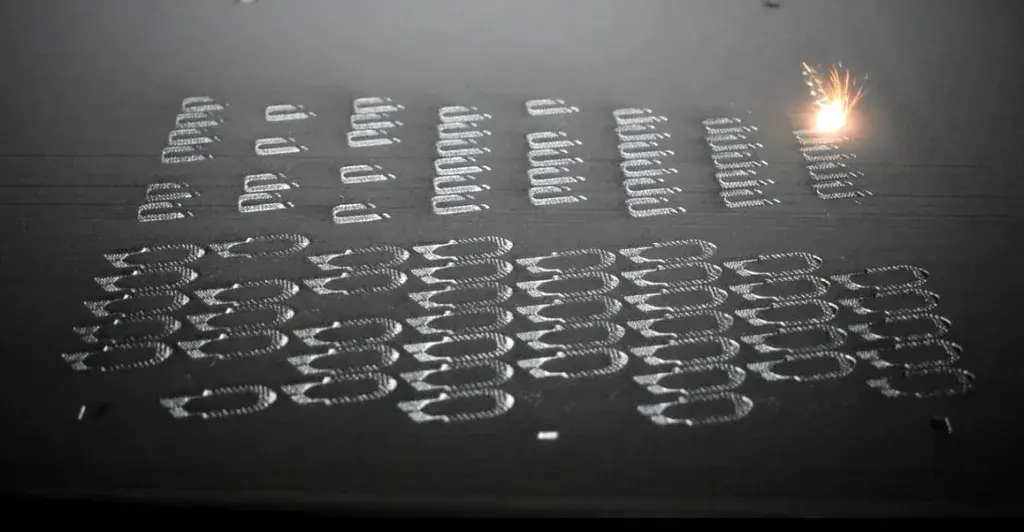
Designed to allow for bone growth
3D Systems provides design consultancy and 3D print production and post-treatment of parts for K2M's FDA-cleared CASCADIA family of interbody systems. The fast-growing CASCADIA product line was recognized by Orthopedics This Week with a 2016 Spine Technology Award.
CASCADIA products take advantage of 3D Systems’ ProX® DMP 320 printers and K2M’s advanced methodologies called Lamellar 3D Titanium Technology™ to produce structures that are impossible to manufacture using traditional techniques.
Starting with a titanium powder, the implants are created through the selective application of a high-energy laser beam, allowing for both a porosity and surface roughness that enable bone growth. Although the devices have the strength of titanium, x-rays can be taken through them, giving surgeons a better perspective on how an implant interacts with surrounding body structures.
K2M’s product portfolio incorporating Lamellar 3D Titanium Technology includes the CASCADIA TL, AN, Lateral, AN Lordotic Oblique, and Cervical Interbody Systems. The 3D Systems production workflow for these products goes beyond 3D printing to encompass post-processing such as heat treatment, surface finishing, cleaning and laser marking -- everything required to deliver a finished product.
Tom Morrison, MD, a neurosurgeon at Polaris Spine and Neurosurgery Center in Atlanta, Georgia, has used CASCADIA Interbody Systems for more than a year.
"I continue to be impressed with the Lamellar 3D Titanium Technology," says Dr. Morrison. "The porosity and surface roughness properties make great biologic sense and the long-term follow up I’m seeing with my patients reinforces my good impression. I look forward to continuing use of the CASCADIA Interbody Systems and am excited to further incorporate K2M’s Lamellar 3D Titanium Technology in other bone-growth applications."
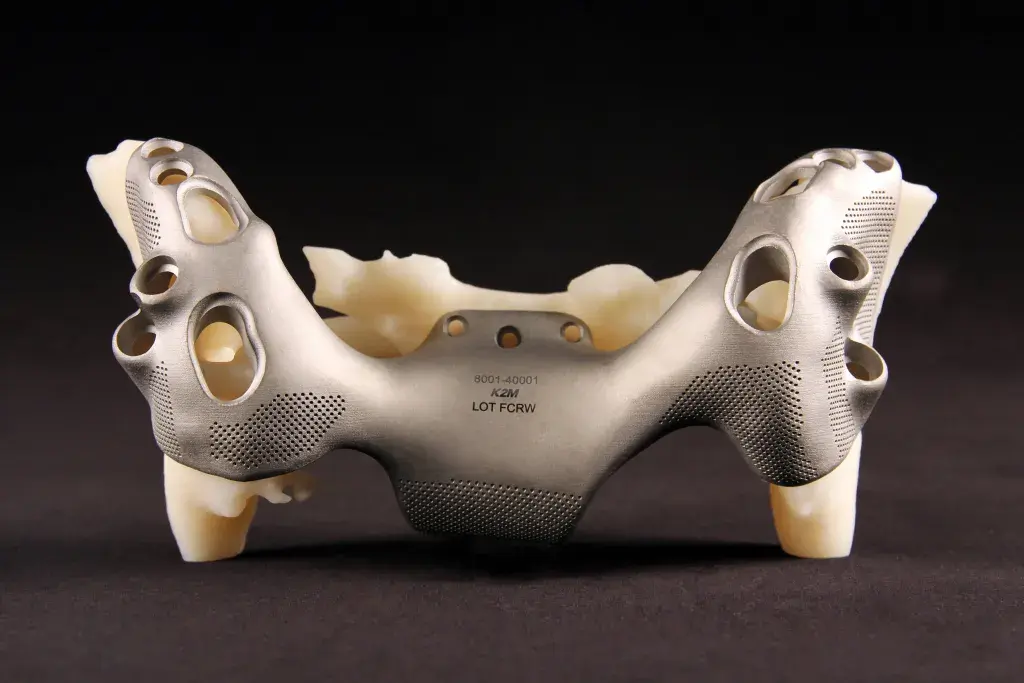
Applications for 3D printed implants
A recent example of the power of K2M’s and 3D Systems’ relationship is a case where 3D Systems provided VSP (Virtual Surgical Planning) and collaborated with K2M to create a “compassionate use” device, which is a device provided in rare situations where no good alternatives exist for the patient.
The surgical process came about when Sean Reynolds, a group project manager at K2M, was talking to Dr. Michael Finn, a neurosurgeon at the University of Colorado who specializes in spinal disorders, about recent developments within the company.
Dr. Finn had a patient who he thought would be a good candidate for a 3D printed implant. The patient had a previous operation and wasn't healing well, suffering from limited mobility. At the time, there were no good implant alternatives on the market to help the patient. Dr. Finn thought that removing the hardware from the previous operation and replacing it with a 3D printed implant would be the best form of treatment.
"There's a lot of stress on that area of the body and the patient wasn't healing well," says Dr. Finn. "I thought a 3D printed implant would give the patient the best chance to heal."
Based on spinal scans and web meetings with K2M and Dr. Finn, 3D Systems developed a virtual surgical plan for the operation. Discussions among the three central parties led to the design of the implant and decisions on the type of screws to hold it in place.
From Dr. Finn's perspective, the operation was a success and the collaboration between K2M and 3D Systems was exemplary.
"I was impressed with the dynamism of both companies. They really focused on getting something done in a timely fashion. K2M knows how to come up with new innovations to support surgeons performing complex operations, and 3D Systems has participated in so many similar procedures in the past that it was a walk in the park for them."
Model for the future
For Sean Reynolds and K2M, the meshing of the two companies during a critical run-up to a successful operation was an exciting prelude to a potential and promising new business area: providing surgical planning and patient-specific implants for complex spinal degeneration cases.
Although “compassionate use” cases are rare, the process used in the above case can be a model for developing patient-specific implants in the future. These would be implants that are FDA-cleared to be manufactured within certain ranges based on the patient’s needs.
"Based on our experience with 3D printing, we believe that in the future 3D printed patient-specific spinal implants will be common for not only complex cases, but degenerative cases too,” says Reynolds. “We're very satisfied, encouraged and excited about the prospects for this and other types of collaboration with 3D Systems in the future."
